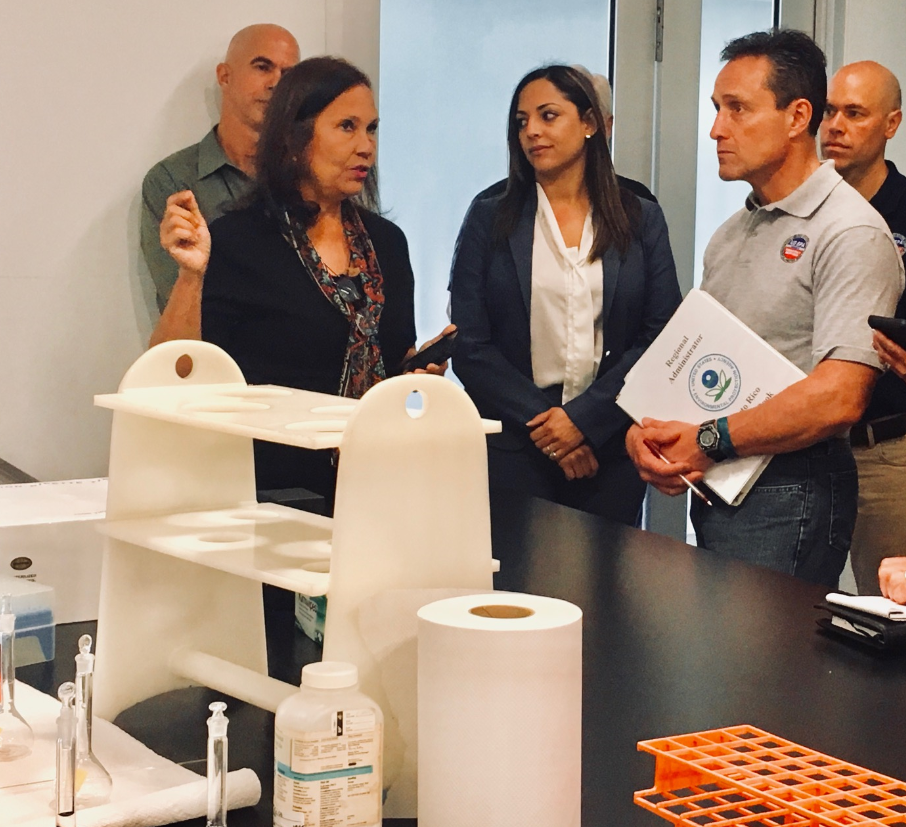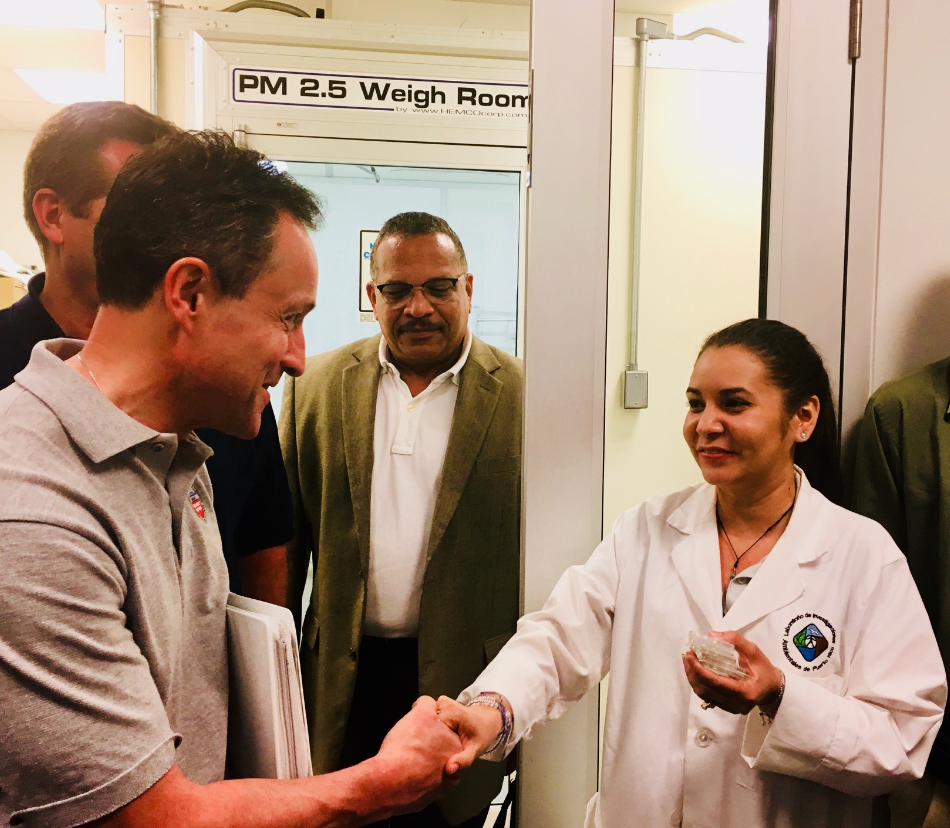| EPA Helps Restore Puerto Rico's Science Lab and Air Quality Monitoring Capabilities Contacts: Soledad Calvino, (415) 697-6289, calvino.maria@epa.gov Brenda Reyes, (787) 977-5869, reyes.brenda@epa.gov (New York, NY – April 25, 2018) The U.S. Environmental Protection Agency continues to help Puerto Rico respond to the damage caused by Hurricanes Irma and Maria. EPA, under a mission assignment from FEMA, and in close cooperation with the Puerto Rico government, is supporting the Puerto Rico Environmental Quality Board's (EQB) efforts to restore its science laboratory. Working hand-in-hand with the Puerto Rico government, the EPA is also repairing, re-energizing and rebooting the government's air monitoring network, which is a key component to ensuring air quality and protection of people's health in Puerto Rico. Nitrogen dioxide, sulfur dioxide, lead, fine air particles, ozone, and carbon monoxide can adversely affect people's health. Thus, it is critically important to have a reliable and state-of-the art air monitoring network in place. On Tuesday, April 24, EPA Regional Administrator Pete Lopez met with Department of Natural and Environmental Resources Secretary and Environmental Quality Board President Tania Vázquez Rivera at the science laboratory in San Juan to review progress and continue our government-to-government coordination on hurricane response and recovery. "We deeply respect the people of Puerto Rico and all they have been through. This trip reinforced the dedication of the community's leaders and the close working relationship we have worked to develop." said Pete Lopez, EPA Regional Administrator, whose own family was made homeless by Hurricanes Irene and Lee in New York State seven years ago and who also has family in Puerto Rico. "Under the leadership of President Trump and Administrator Pruitt, we are committed to storm recovery in Puerto Rico. We will continue to work with the government of Puerto Rico and other civic leaders to advance their vision for helping communities rebuild stronger and more sustainably." "As a result of the joint efforts between EPA and EQB we will have in the next months, a state of the art environmental research facility for Puerto Rico. The facility will provide a platform for our agency and other institutions to preserve, conserve and protect our health and natural resources", said Tania Vázquez Rivera, Secretary, Puerto Rico Department of Natural and Environmental Resources. 
Total Suspended Solids Sampling and Analysis – PR EQB Lab Eileen Villafañe, Director of the PR EQB Laboratory, Pete Lopez, EPA Regional Administrator, Tania Vázquez Rivera, Department of Natural and Environmental Resources Secretary and Environmental Quality Board President and Keith Glenn, EPA Emergency and Remedial Response Division. Photo courtesy of U.S. EPA. 
Air Sampling and Analysis – PR EQB Lab Pete Lopez, EPA Regional Administrator, José Font, Deputy Director of EPA Region 2 Caribbean Environmental Protection Division, PR EQB lab scientist. Photo courtesy of U.S. EPA. The Puerto Rico EQB Analytical Laboratory in San Juan was severely impacted by Hurricane Maria and requires major work to make it fully operational. The laboratory provides for critical analysis of drinking water, beach samples and surface waters. In addition, with commercial laboratory capacity greatly reduced as a result of the hurricanes, returning the laboratory to full working order will increase the overall analytical capacity on the island. The lab is crucial to maintaining the local government's programs associated with the federal Clean Air Act, the Safe Drinking Water Act, the Clean Water Act and emergency response capabilities. For the Puerto Rico EQB science lab, EPA has: - evaluated infrastructure, equipment and training needs
- ordered and received new laboratory equipment and supplies
- acquired temporary and emergency power generation systems to run critical and time-sensitive lab work, and is working on obtaining permanent emergency power generation systems
- installed climate control systems in chemical storage and air sampling areas that are critical for safety reasons and quality assurance purposes
- designed and fabricated ventilation systems
- ordered special lab benches and countertops that are resistant to chemicals
- aided in the lab's reboot of computer systems and instrumentation
- assisted with the purchase of chemicals and reagents necessary for running analytical parameters
For the air monitoring network, EPA has: - assessed each of the 20 air monitoring stations and determined what is needed to replace or repair the instrument
- coordinated with the manufacturers to ensure that new equipment meets requirements
- begun preparations for repairs to the air quality measurement stations, construction of station support bases, and providing power to the locations.
The air pollutant data collected at each site varies by monitoring site. Pollutants measured include nitrogen dioxide, sulfur dioxide, lead, fine air particles, ozone, and carbon monoxide. Many air pollutants can trigger asthma, worsen heart disease and cause other adverse health effects including severe respiratory ailments such as emphysema and bronchitis. For more information about EPA's work in response to the hurricanes and for more photos, visit EPA's Hurricane Maria website and Hurricane Maria story map. 18-023 # # # |
0 comments:
Post a Comment